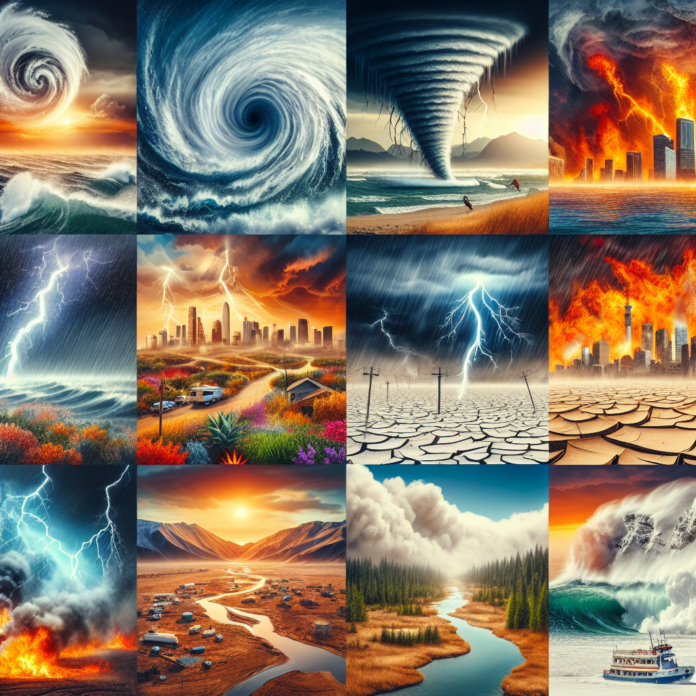Ten Instances of Severe Weather Phenomena
“`html
Severe Thunderstorms
Severe thunderstorms are characterized by intense rainfall, strong winds, hail, and lightning. These storms can produce damaging winds that exceed 58 miles per hour, and they often lead to flash flooding, particularly in urban areas where drainage systems may be overwhelmed. The formation of supercell thunderstorms can also spawn tornadoes, making them particularly dangerous.
Hurricanes
Hurricanes are powerful tropical storms that can cause catastrophic damage when they make landfall. They are classified into categories based on wind speed, with Category 5 hurricanes having winds exceeding 157 miles per hour. In addition to wind damage, hurricanes can produce storm surges that flood coastal areas, resulting in significant loss of life and property.
Tornadoes
Tornadoes are rapidly rotating columns of air that extend from thunderstorms to the ground. They can vary in intensity, with the Enhanced Fujita (EF) Scale categorizing them from EF0 (weak) to EF5 (incredible). Tornadoes can devastate communities in seconds, destroying homes and uprooting trees, and they often occur in regions known as “Tornado Alley” in the central United States.
Heatwaves
Heatwaves are prolonged periods of excessively hot weather, which can pose serious health risks, especially to vulnerable populations. These events can lead to heat-related illnesses such as heat exhaustion and heat stroke, and they can exacerbate existing health conditions. Urban areas are particularly susceptible due to the “urban heat island” effect, where cities become significantly warmer than their rural surroundings.
Floods
Flooding can occur from various sources, including heavy rainfall, rapid snowmelt, or dam failures. It is one of the most common and widespread natural disasters, impacting millions of people each year. Floods can lead to significant property damage, loss of life, and long-term economic impacts. Coastal areas are at risk from both river flooding and storm surges during hurricanes.
Wildfires
Wildfires are uncontrolled fires that burn in forests, grasslands, or prairies. They can be ignited by natural causes such as lightning or human activities like campfires and discarded cigarettes. Extreme heat and drought conditions contribute to the frequency and intensity of wildfires. The aftermath can result in loss of wildlife habitat, air quality deterioration, and significant economic costs for firefighting and recovery efforts.
Blizzards
Blizzards are severe winter storms characterized by strong winds, low temperatures, and heavy snowfall. These conditions can create dangerous travel situations and lead to power outages. The combination of low visibility and blowing snow can cause significant disruptions in transportation and can even result in fatalities due to exposure or accidents.
Cold Waves
Cold waves are prolonged periods of excessively cold weather, often accompanied by strong winds and low temperatures. They can lead to frostbite and hypothermia, particularly for those without adequate shelter. Cold waves can also disrupt transportation, damage crops, and cause heating systems to fail, leading to widespread challenges in affected regions.
Droughts
Droughts are extended periods of below-average precipitation, leading to water shortages that can affect agriculture, ecosystems, and water supply. Severe drought conditions can lead to crop failures, increased food prices, and significant economic losses for farmers. Additionally, prolonged drought can exacerbate wildfire risks and impact groundwater levels.
Extreme Weather Patterns
Extreme weather patterns, including phenomena such as El Niño and La Niña, can significantly impact global weather systems. These patterns can lead to increased rainfall, droughts, or extreme temperatures in various regions. Understanding these patterns is crucial for predicting and preparing for potential extreme weather events, as they have widespread implications for agriculture, water resources, and disaster preparedness.
“`


